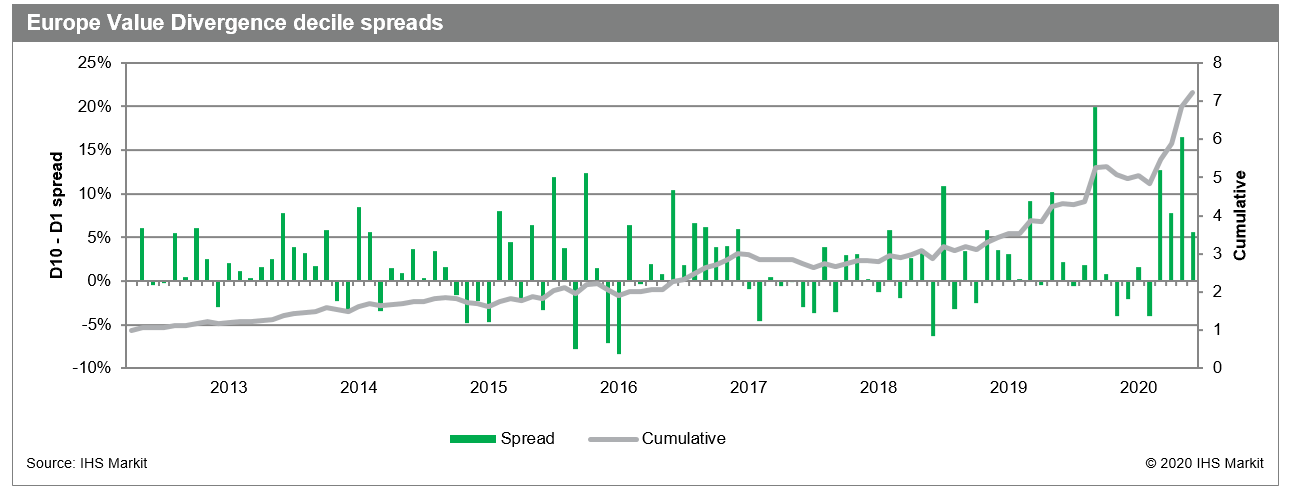CDS factor performance update
Research Signals - July 2020
In April 2012, we introduced a comprehensive suite of trading and risk management signals designed specifically around the credit default swap (CDS) market. Our CDS factor suite opens up unique and insightful opportunities for systematic approaches to CDS evaluation. The indicators range from metrics built using standard financial ratios to fair value estimates, equity analyst estimates and cross-asset insights. In this report, we review factor performance since the inception of this suite, with additional attention to extreme movement during the recent COVID-19-induced market volatility.
- US: Since the CDS factor suite went live, Price Momentum measures were the most consistent outperformers, particularly those capturing short-term changes in probability of default, led by 5-day Change in Probability of Default (Tenor=5Y) among investment grade CDS and 4-week Industry Relative Return for high yield CDS
- Europe: Beyond strong performance from short-term Price Momentum factors, Value Divergence, a proprietary cross-asset measure capturing the level of divergence between the equity and CDS markets, posted positive spreads in 66% of months
- Asia Pacific: While Probability of Default (Tenor=5Y) was the top long-term performer, recent Street Revision Magnitude performance suggests that CDS traders temporarily turned to analyst outlook in droves during the extreme market volatility in March 2020, behavior more consistent with the first half of the analysis period
- March 2020 exposures to 1-month Change in Probability of Default (Tenor=5Y) captured notable increasing probability of default in the Energy sector in North America for both investment grade and high yield CDS, while Basic Materials also weakened in Europe and Industrials improved in Asia Pacific

S&P Global provides industry-leading data, software and technology platforms and managed services to tackle some of the most difficult challenges in financial markets. We help our customers better understand complicated markets, reduce risk, operate more efficiently and comply with financial regulation.
This article was published by S&P Global Market Intelligence and not by S&P Global Ratings, which is a separately managed division of S&P Global.